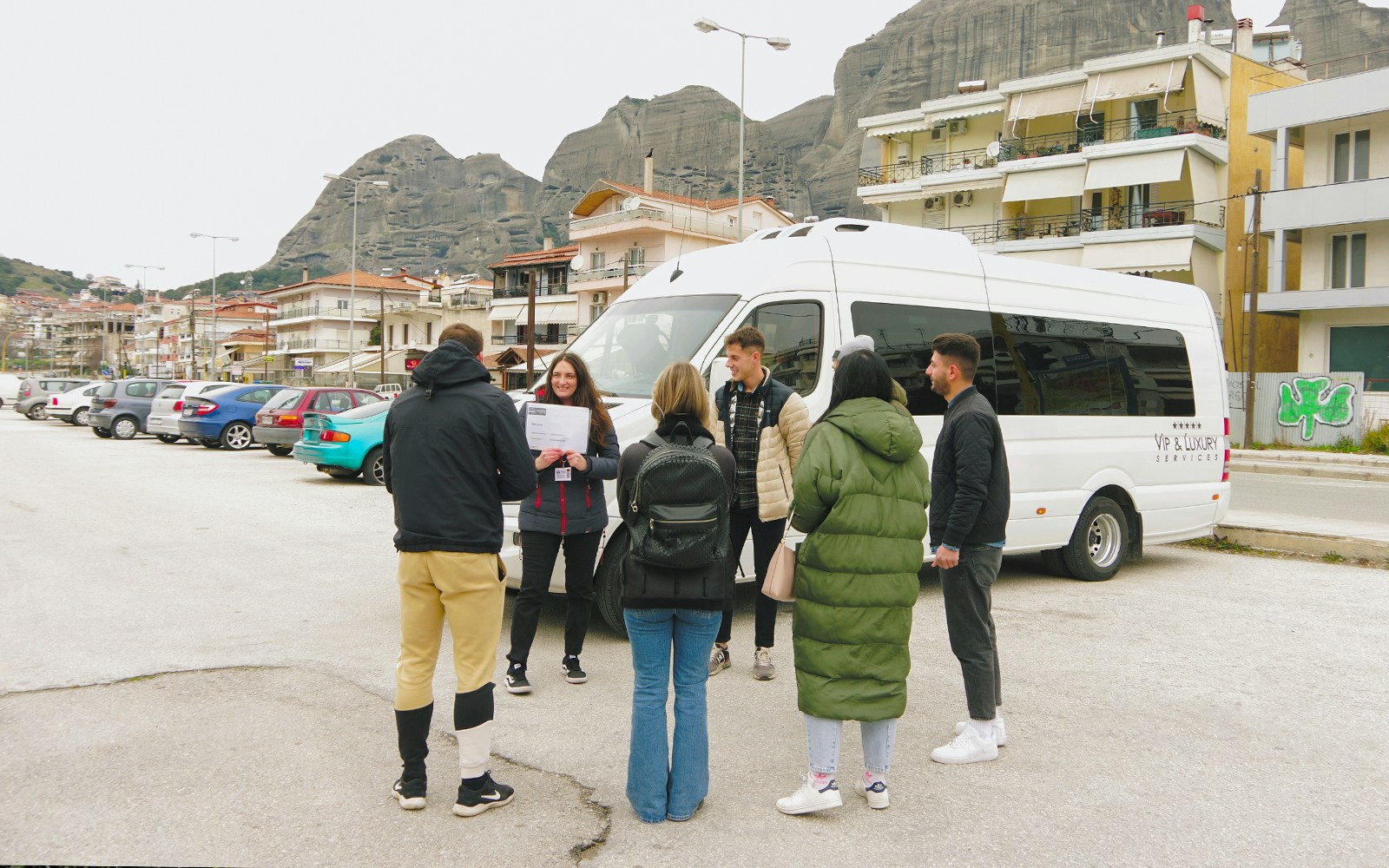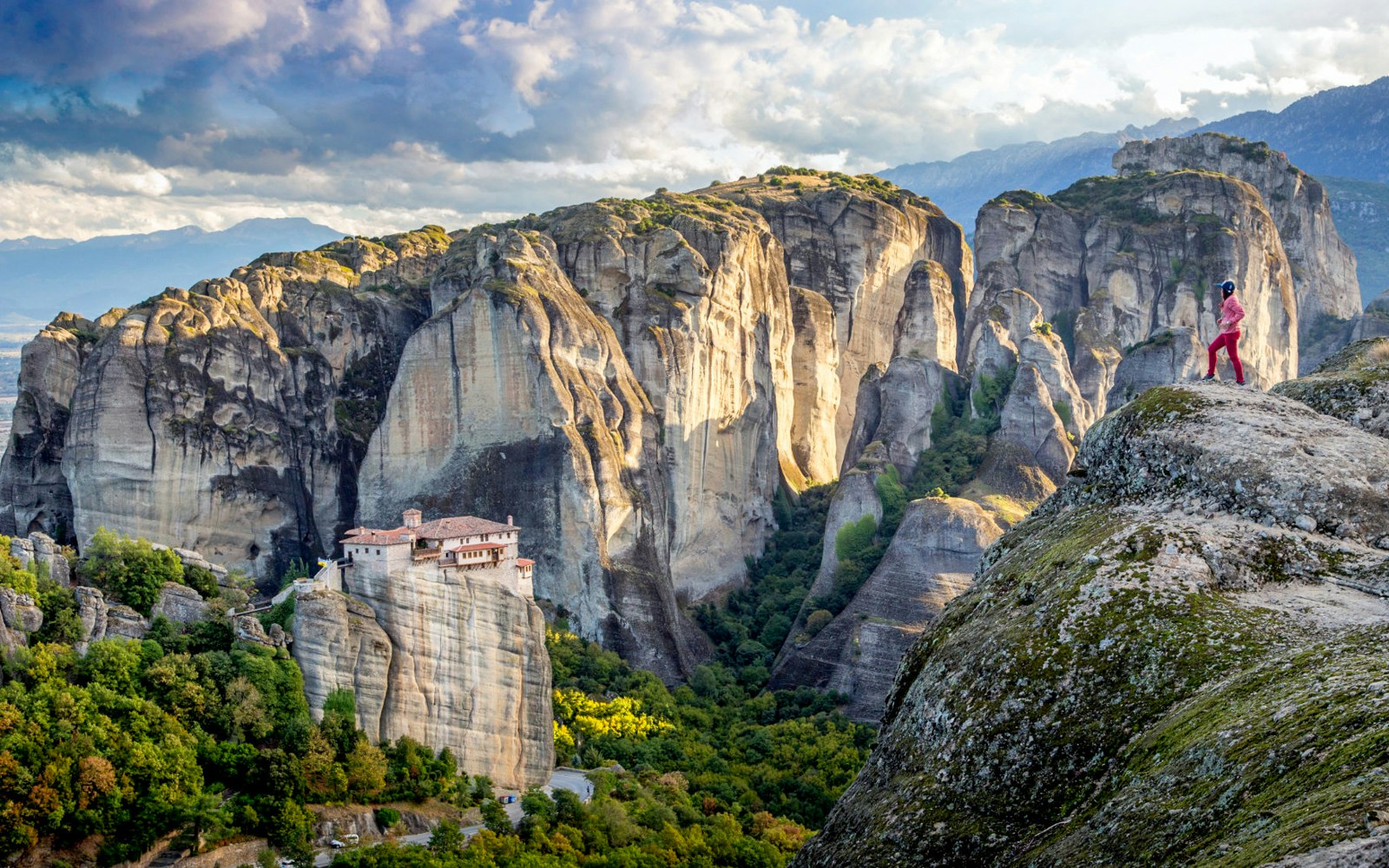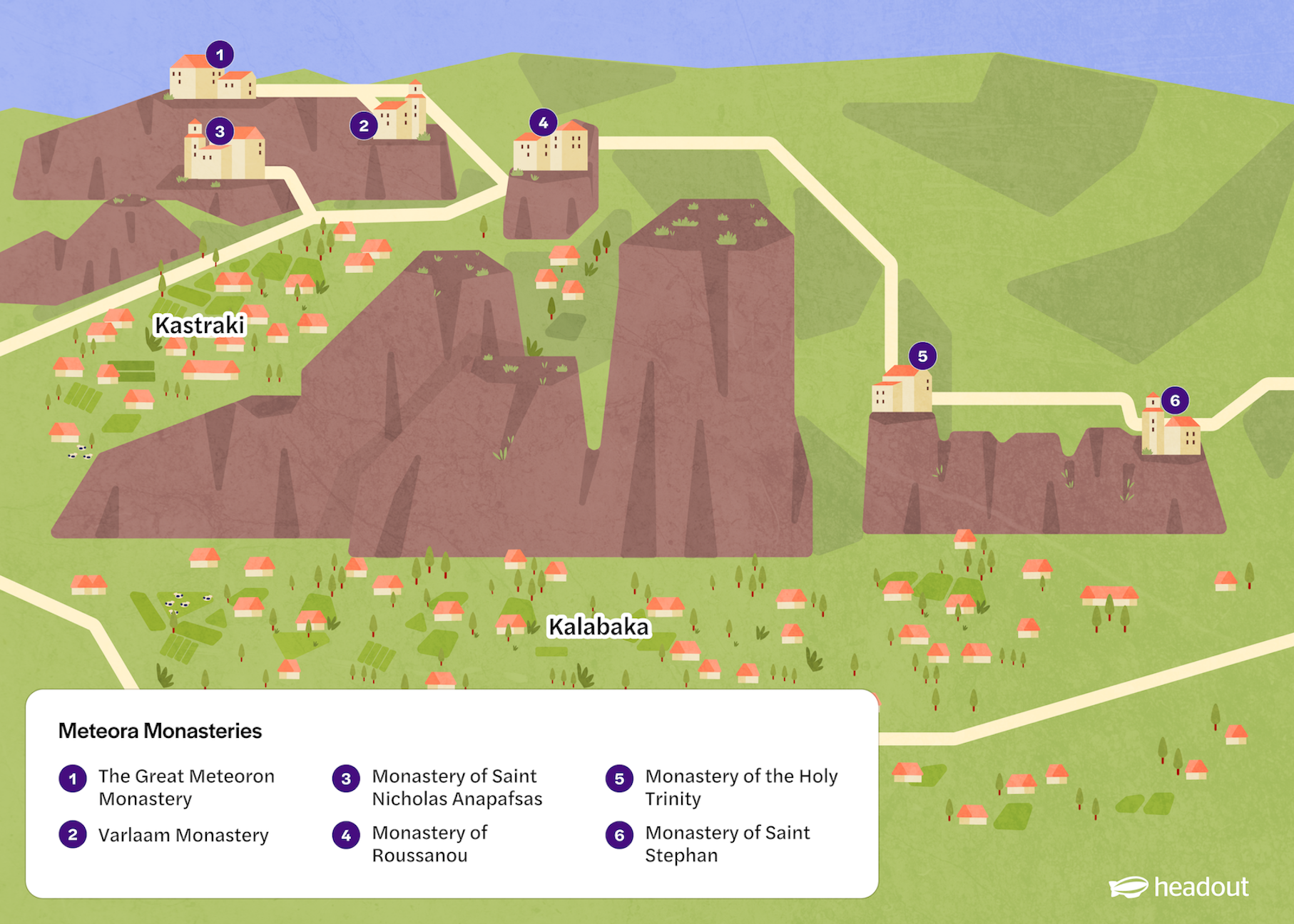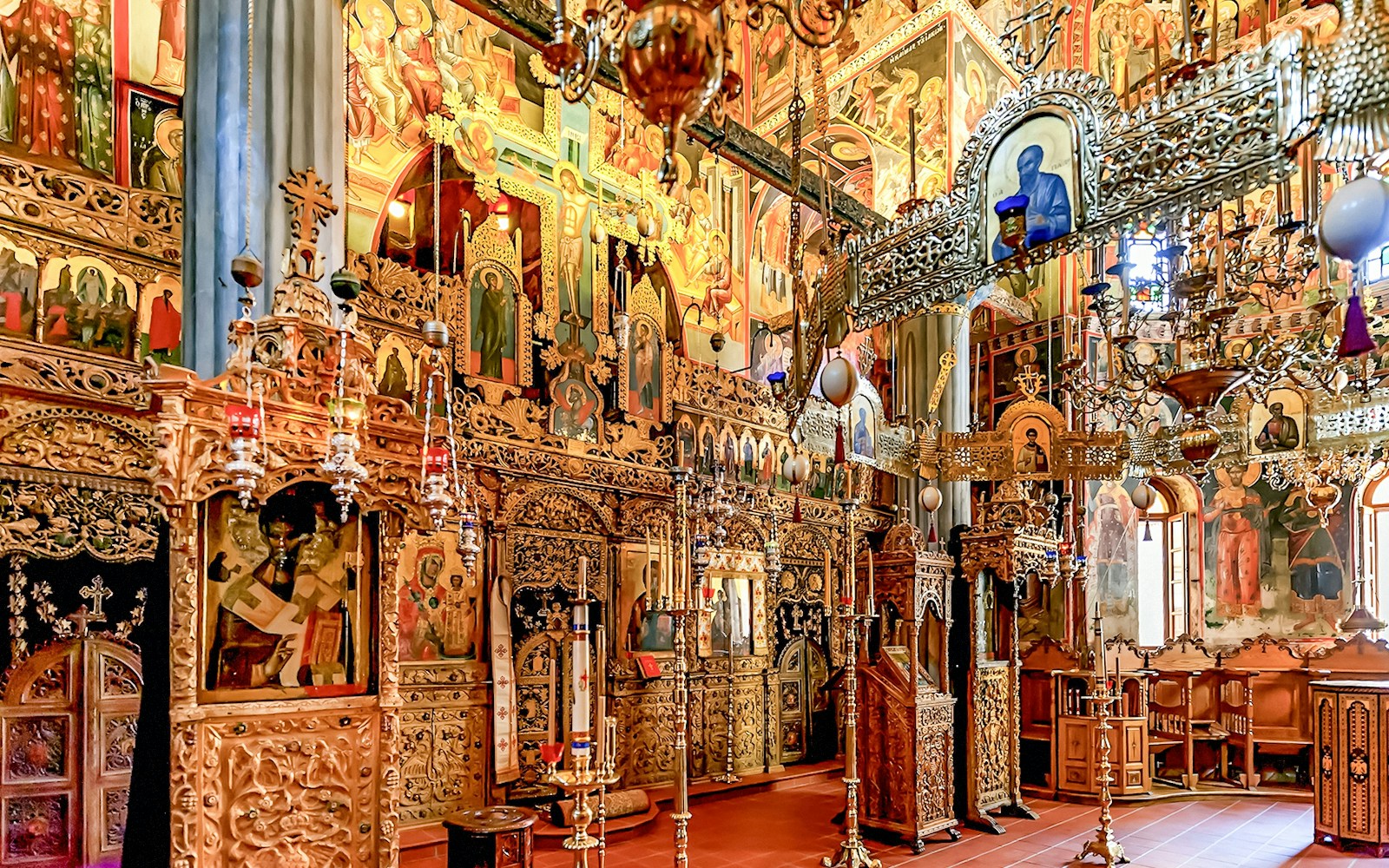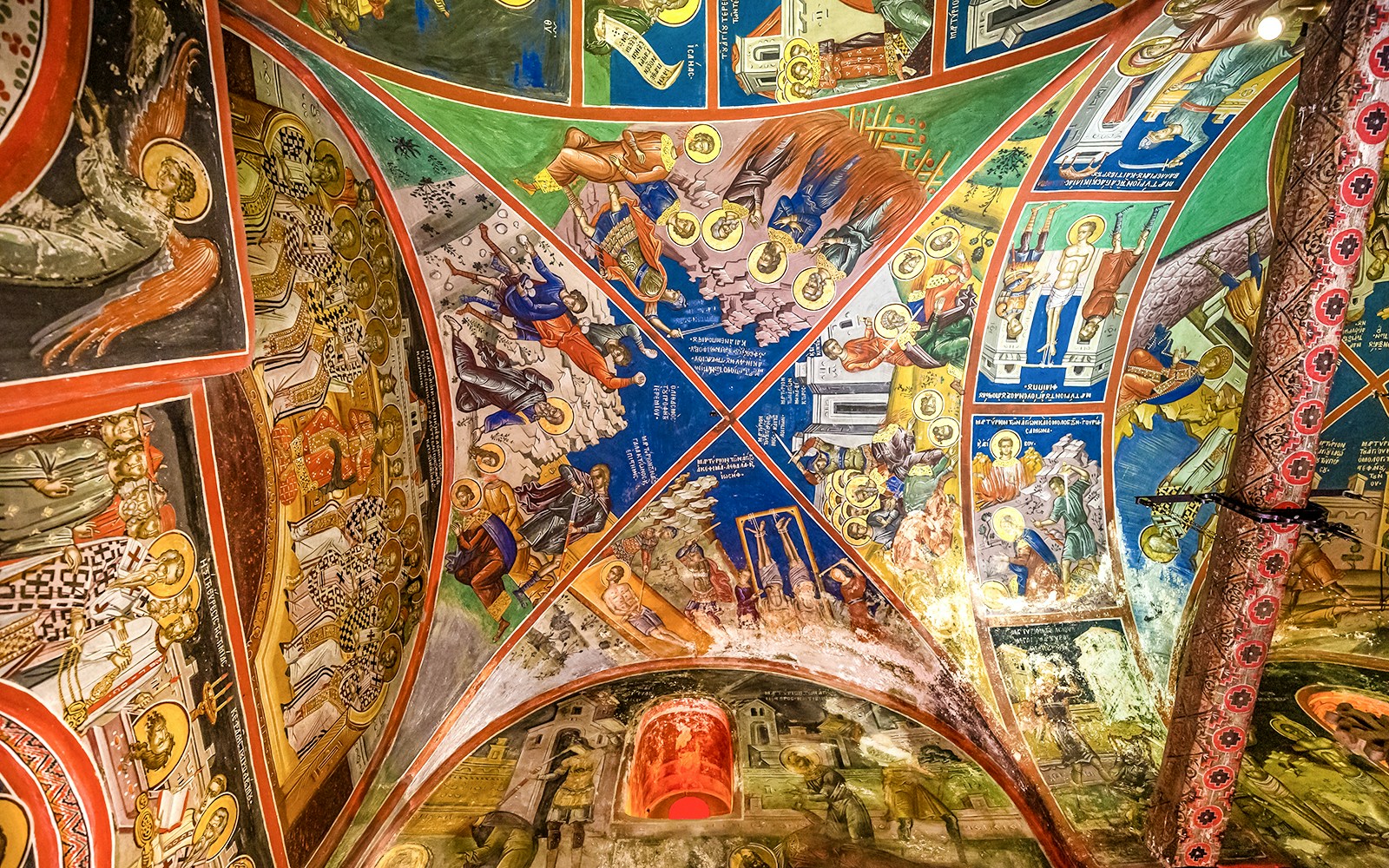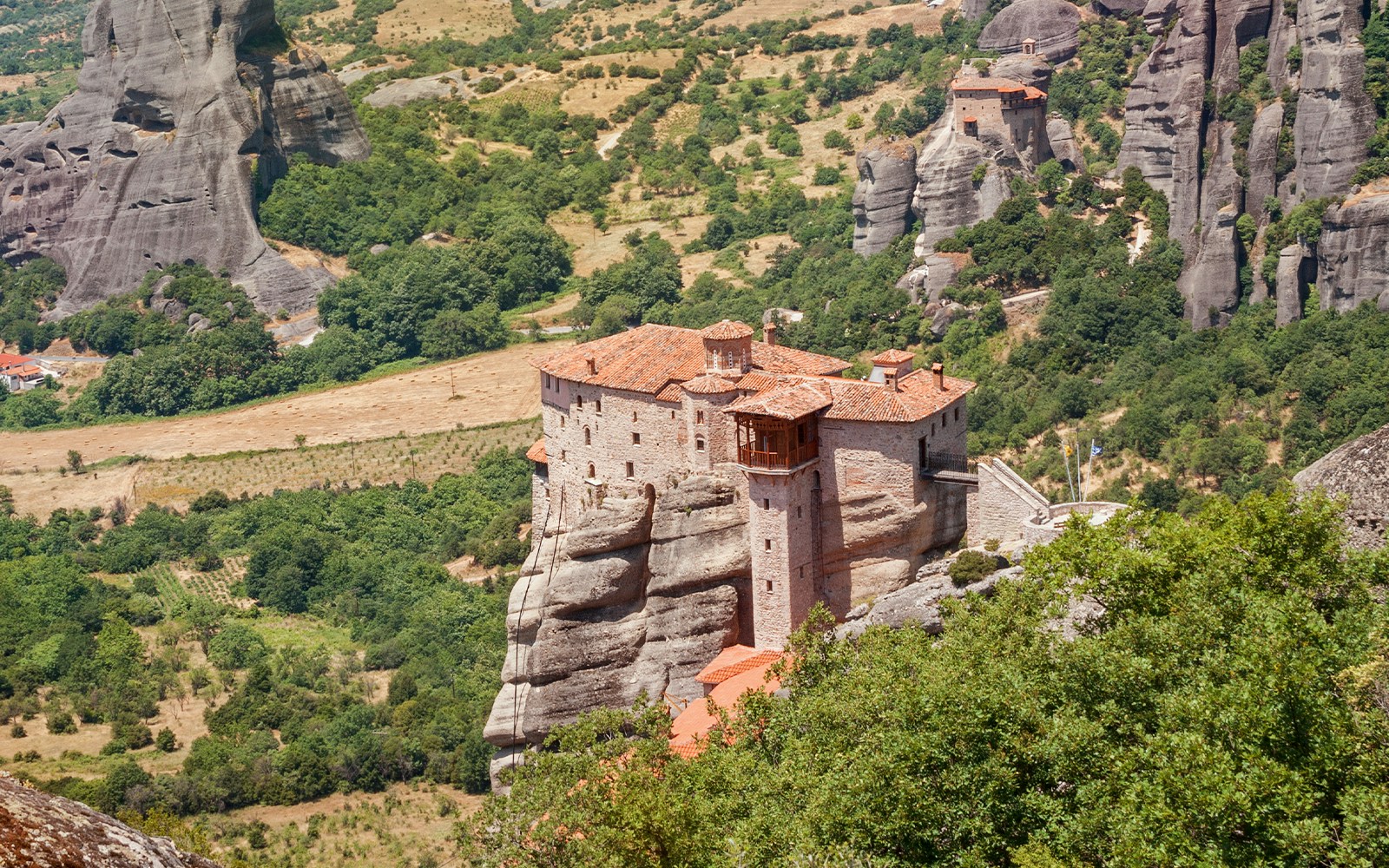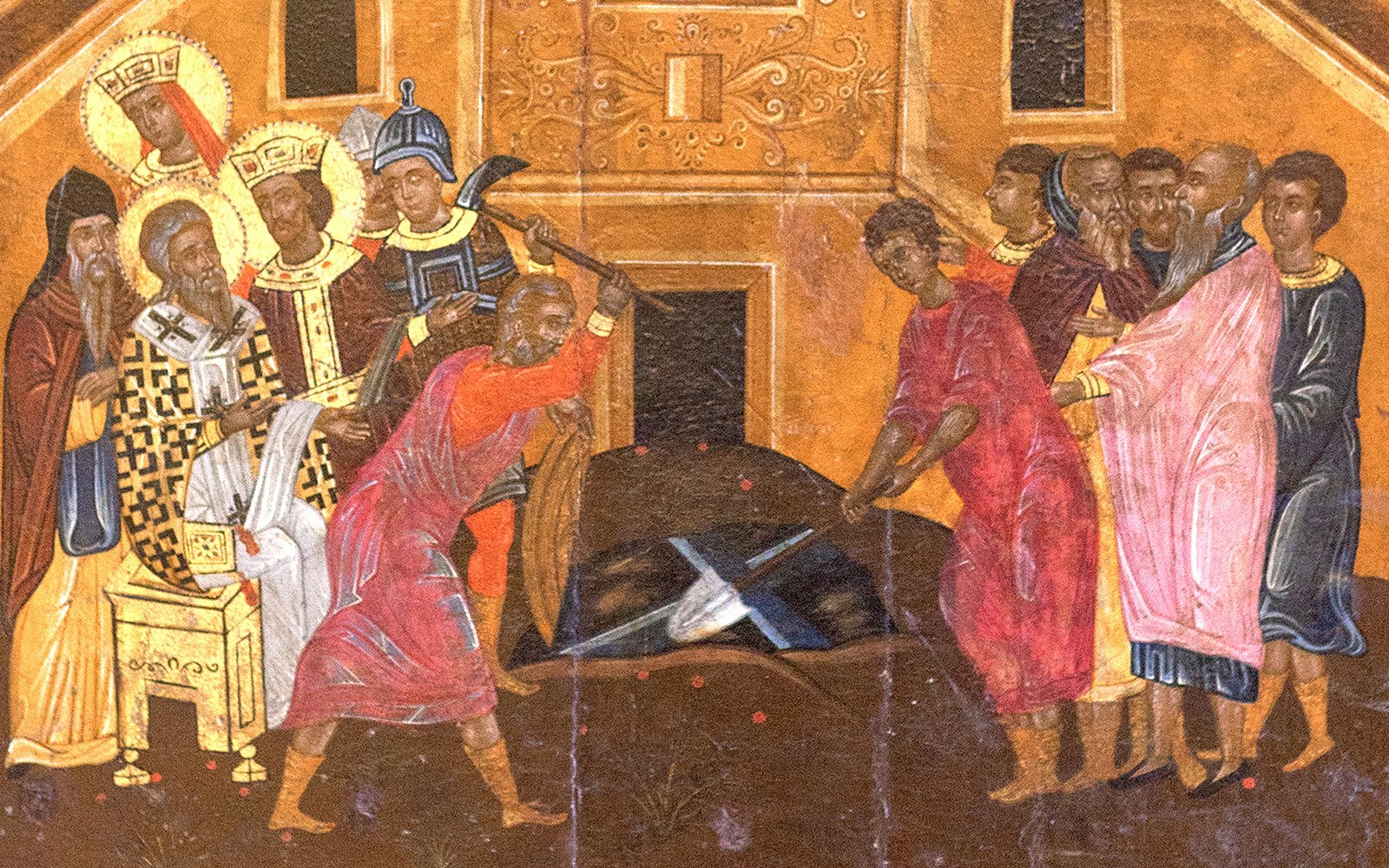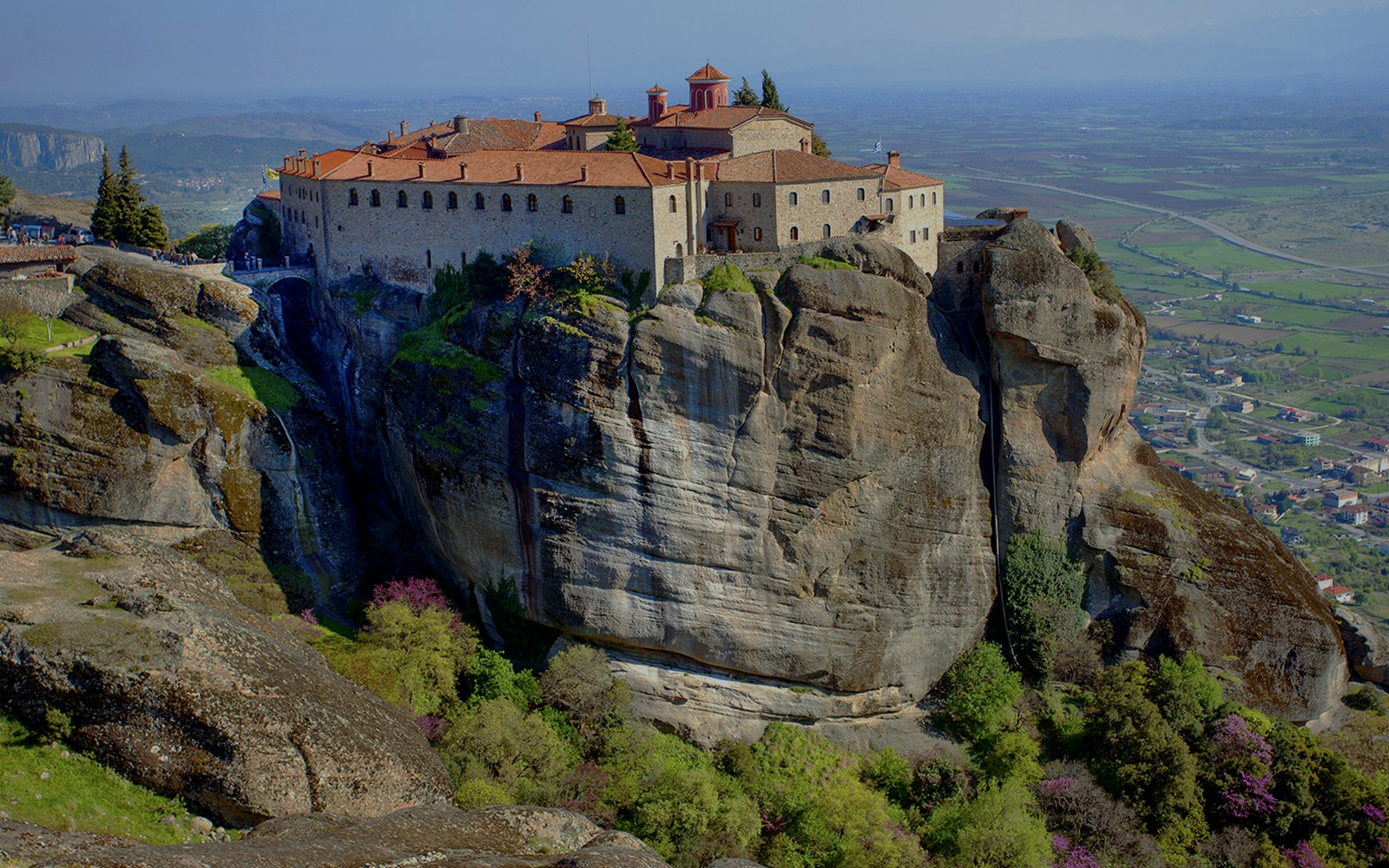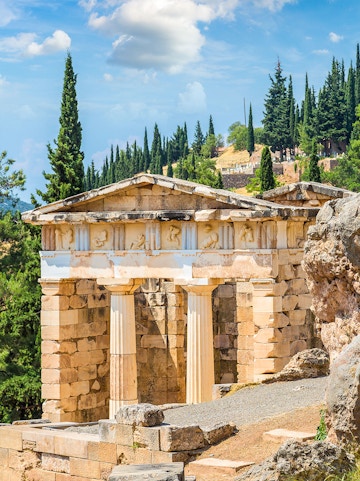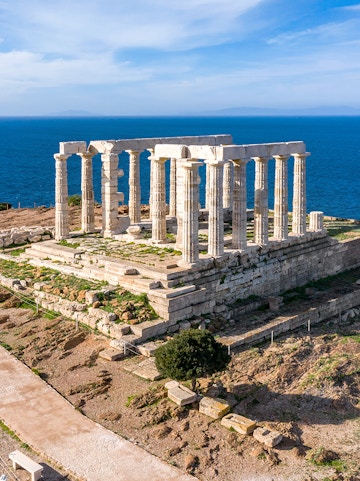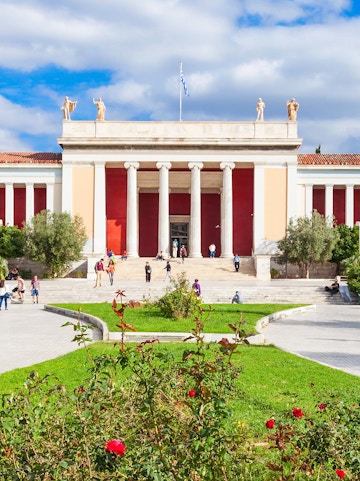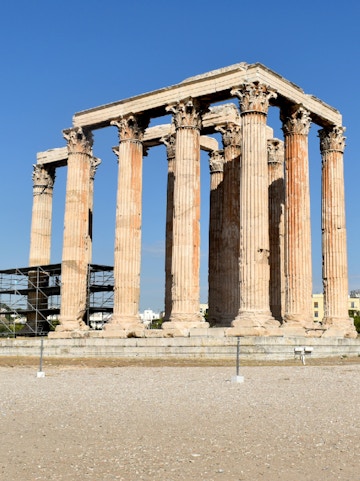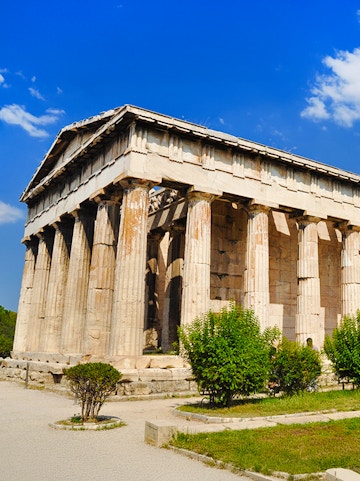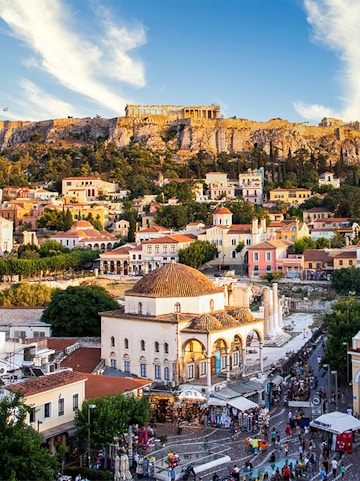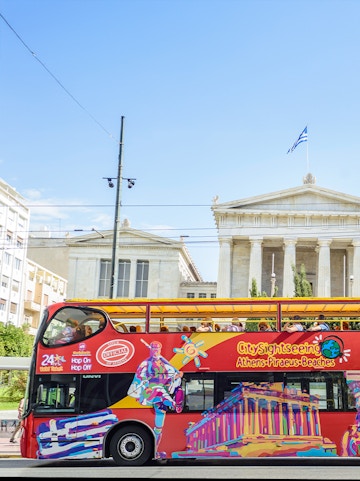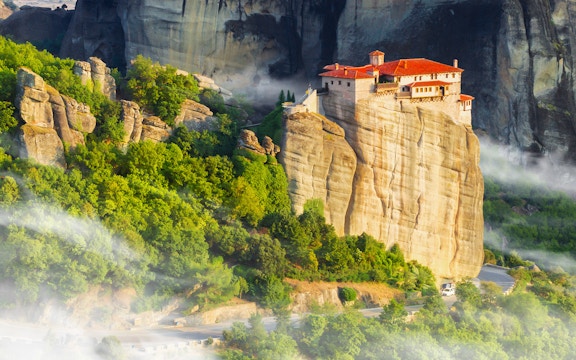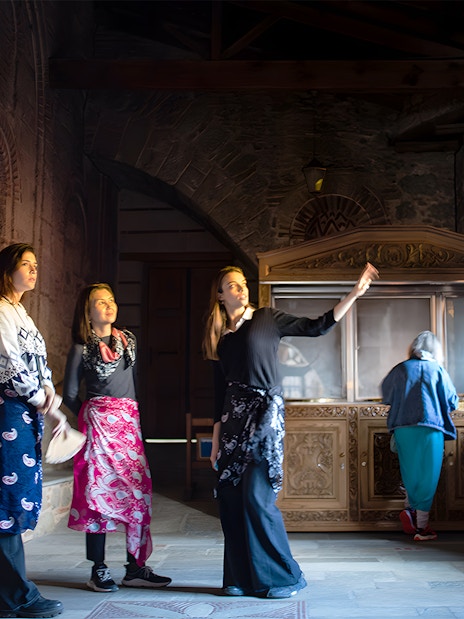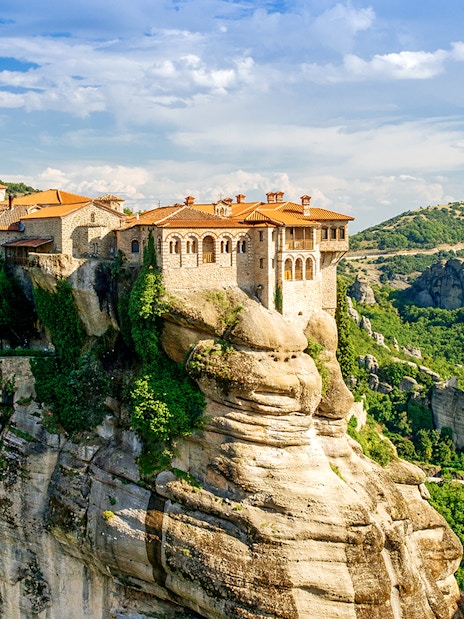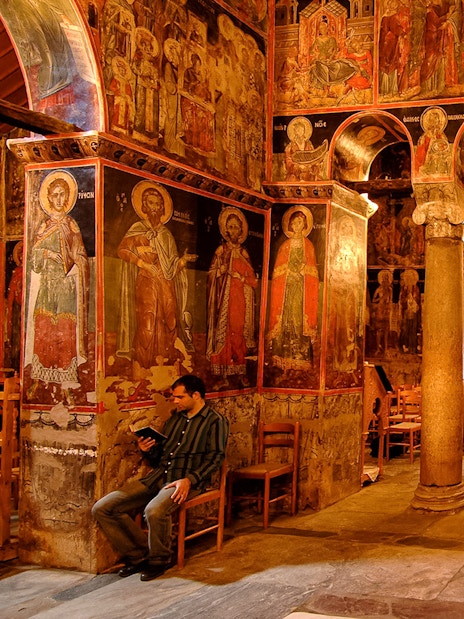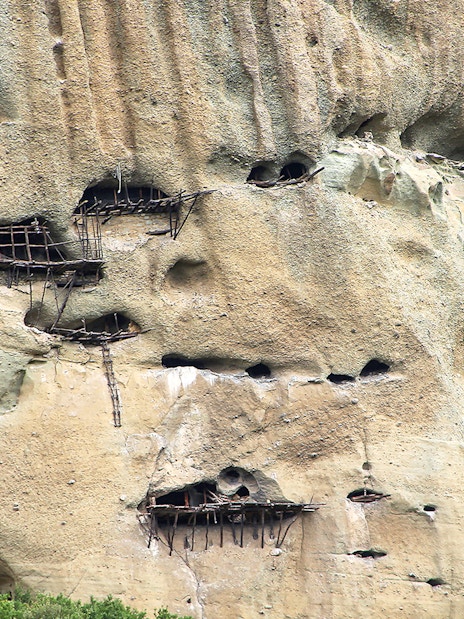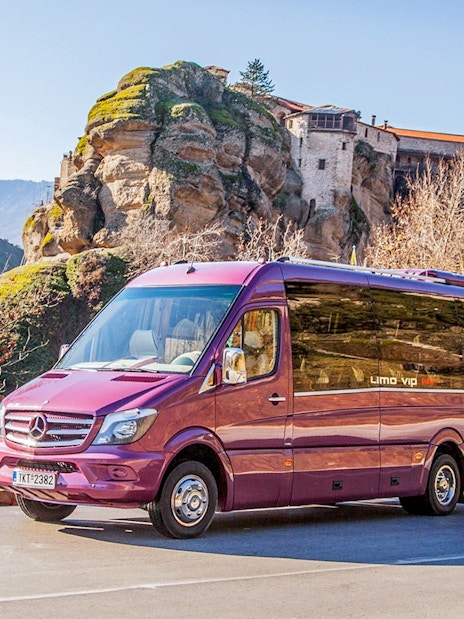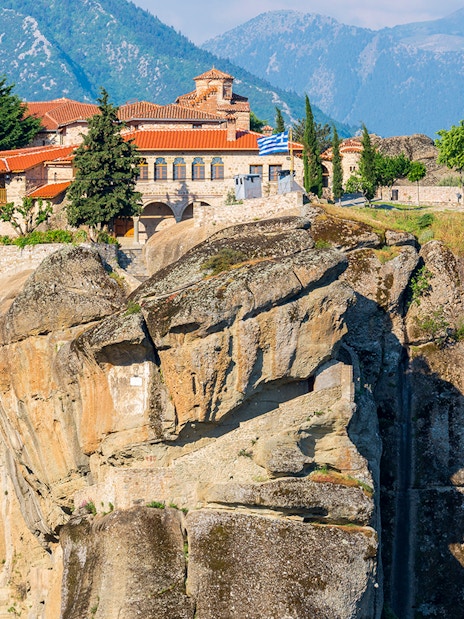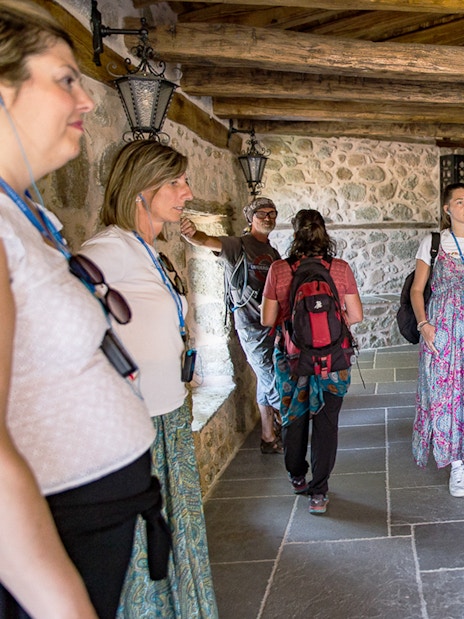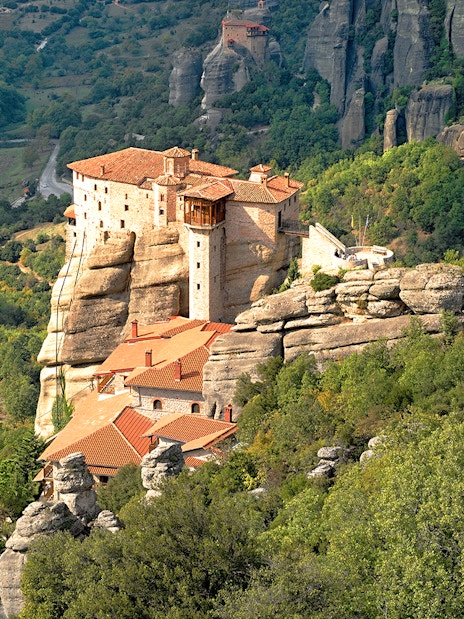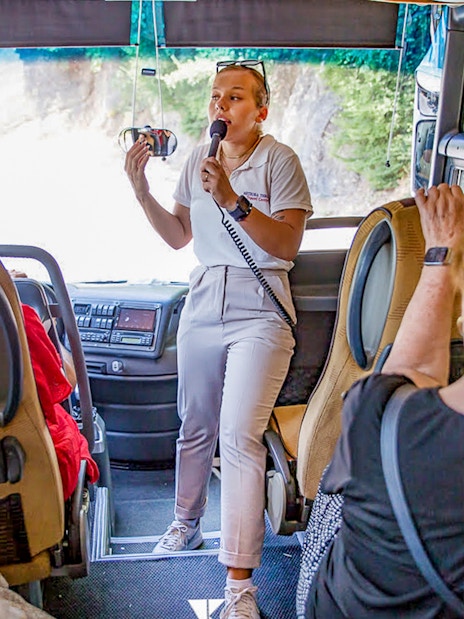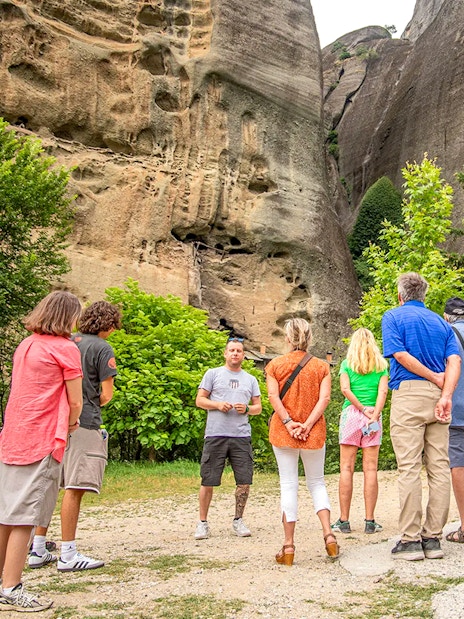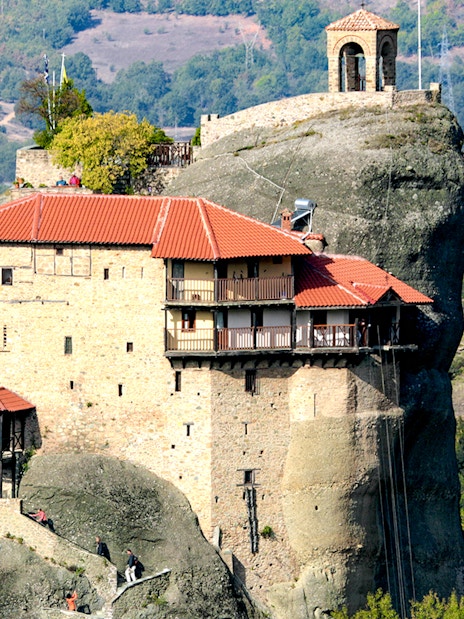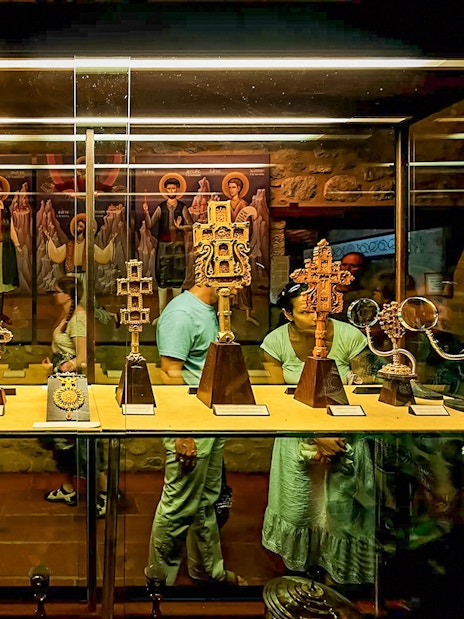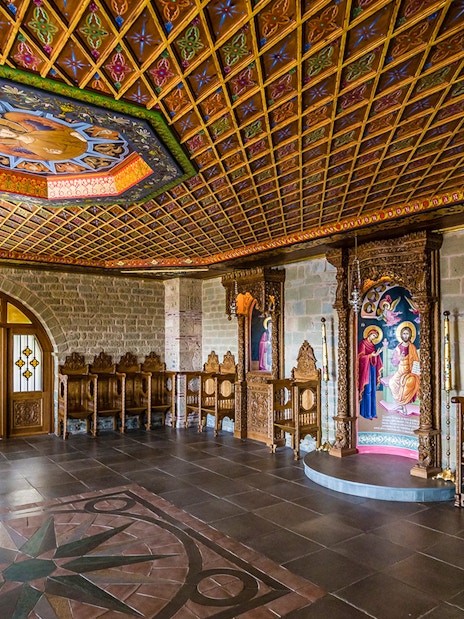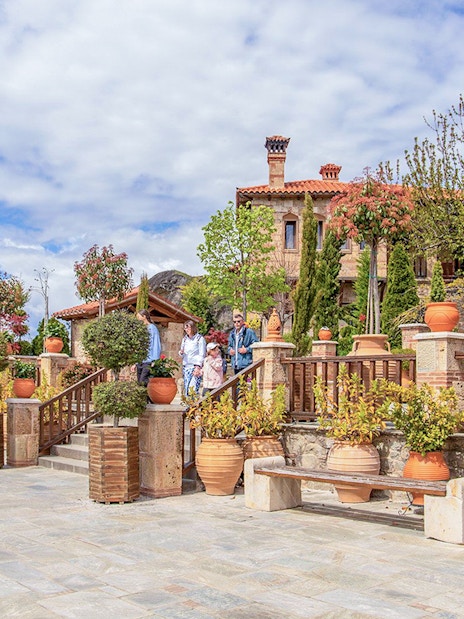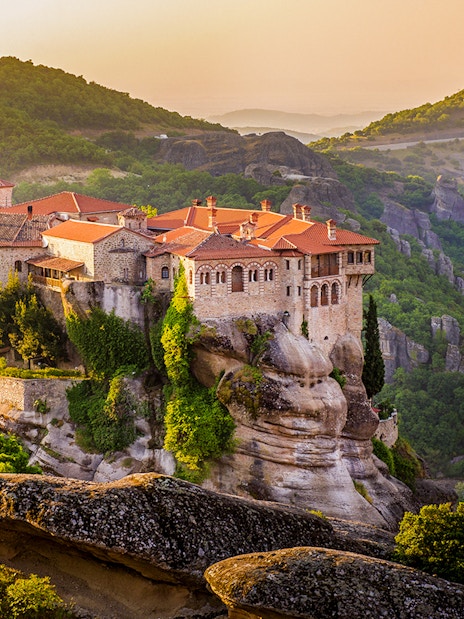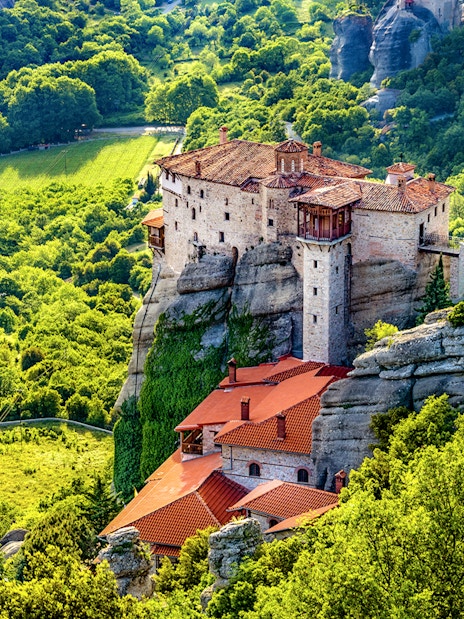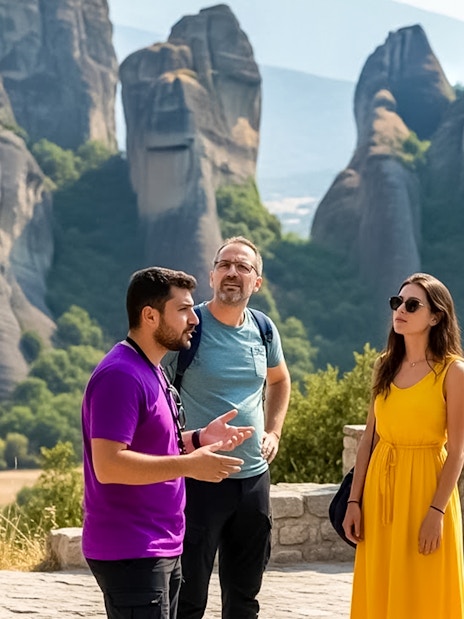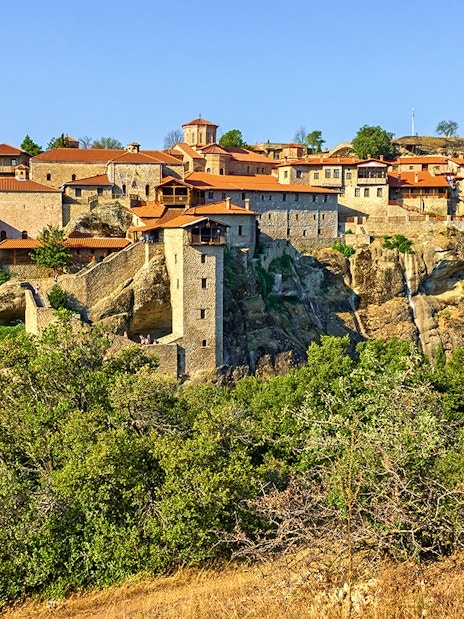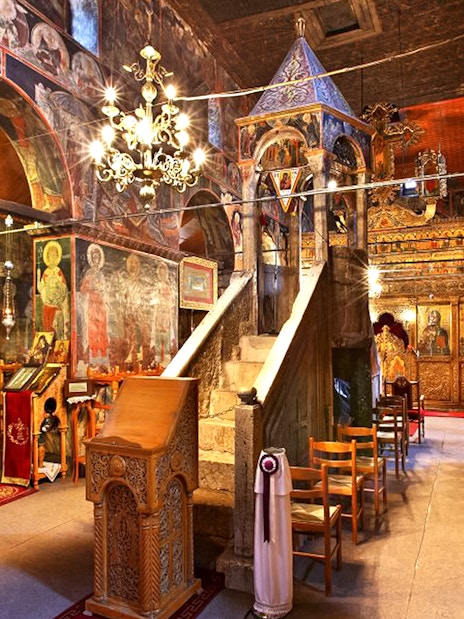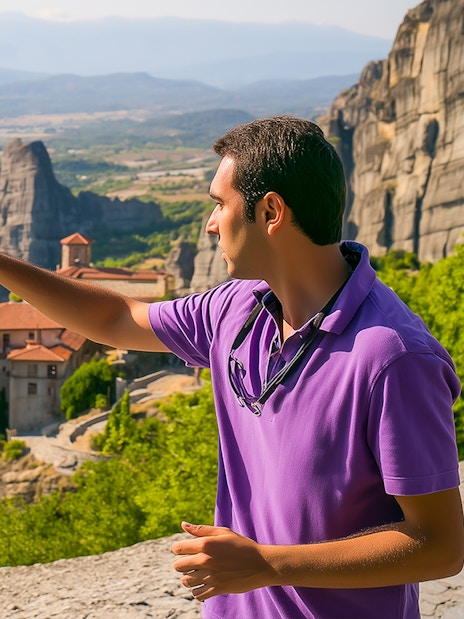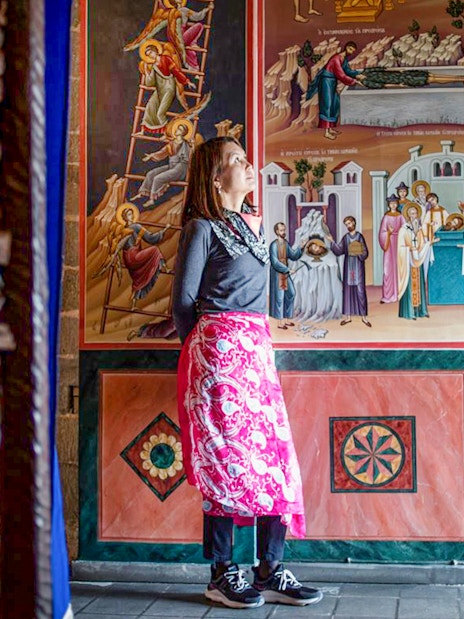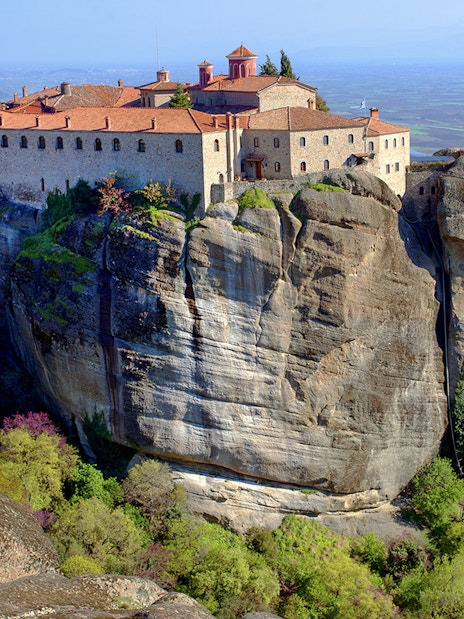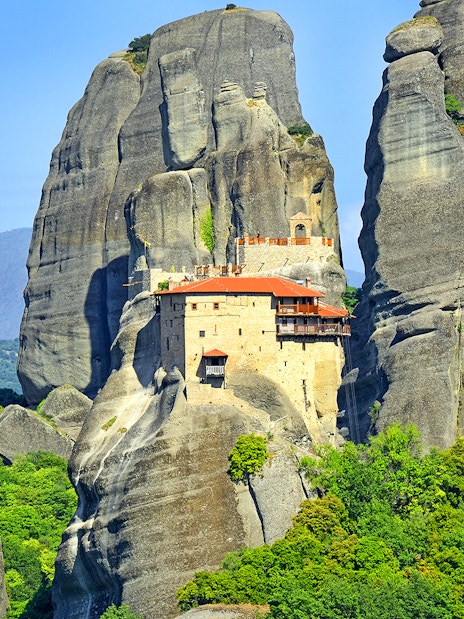Planning your visit to Meteora
Best time to go
The ideal months to explore Meteora are spring (March to May), when mild weather and blooming wildflowers make hikes and monastery visits especially enjoyable. Autumn (September to early November) also offers pleasant temperatures, thinner crowds, and stunning fall foliage, particularly in October.
Accessibility
Most monasteries involve uneven stone paths, steep stairs, and narrow walkways, which can be challenging for visitors with limited mobility. St. Stephen’s Monastery is the easiest to access, featuring a paved path and minimal steps.
Rules
- Meteora is an active religious site, so modest attire is required. Women should wear skirts or dresses covering the knees and shoulders, while men should wear long trousers.
- Photography is not permitted inside the monasteries, though you can click pictures of the exterior, cliffs, and surrounding valleys.
Visitor essentials
- Most monasteries request a small cash offering (€3 to €5 per site), so bring small bills.
- Comfortable walking shoes are essential due to uneven terrain and stairs.
Tips for exploring
While the larger monasteries, like Great Meteoron and Varlaam, are popular, take time to visit smaller sites such as St. Nicholas Anapausas or Rousanou, which offer equally breathtaking views with fewer crowds for a more peaceful experience.















